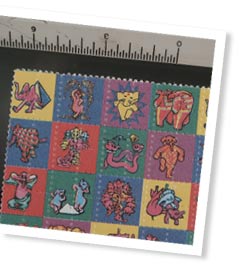Hallucinogens
What are they?
Hallucinogens, or "psychedelics", are drugs that alter users' state of consciousness and produce different kinds of hallucinations.
The main types of hallucinogens are d-lysergic acid diethylamide (LSD), hencyclidine (PCP), hallucinogenic amphetamines, mescaline and psilocybe mushrooms.
LSD - D-Lysergic Acid Diethylamide
 What is it?
What is it?
LSD is a semi-synthetic drug derived from lysergic acid, which is found in a fungus that grows on rye and other grains.
LSD, commonly referred to as "acid", is one of the most potent hallucinogens. It is usually sold on the street as small squares of blotting paper with drops containing the drug, but also as tablets, capsules or occasionally in liquid form. It is a colourless, odourless substance with a slightly bitter taste.
How is it taken?
It is usually swallowed.
How does it affect users?
Taking LSD leads to strong changes in thought, mood and senses in addition to feelings of empathy and sociability. However, the exact effects of LSD vary depending on the mental state of the user and the environment when taking the drug.
What are the risks associated with LSD use?
Short-term, LSD produces delusions and distorted perceptions. The user´s sense of depth and time changes and colours, sound and touch seem more intense.
Some LSD users experience severe, terrifying thoughts and feelings such as fear of losing control, fear of insanity and death, and despair.
The physical effects are small compared to the psychological and emotional effects. They include dilated pupils, increased heart rate and blood pressure, loss of appetite, sleeplessness, dry mouth and tremors.